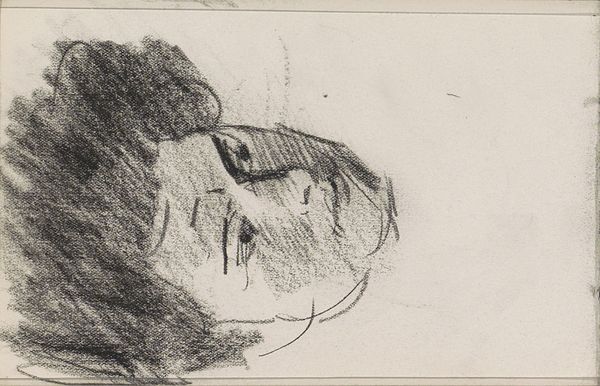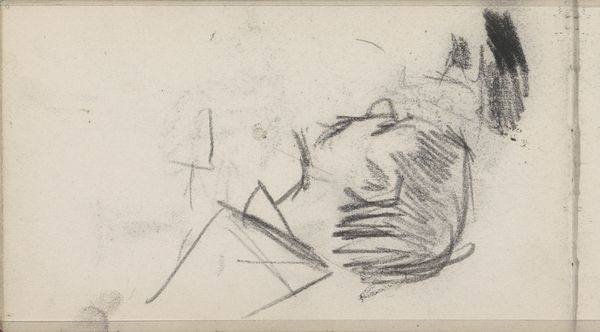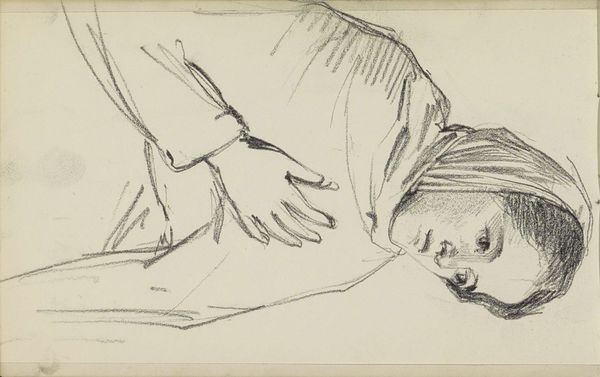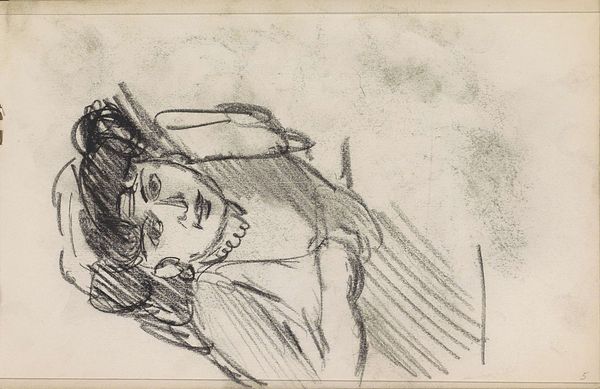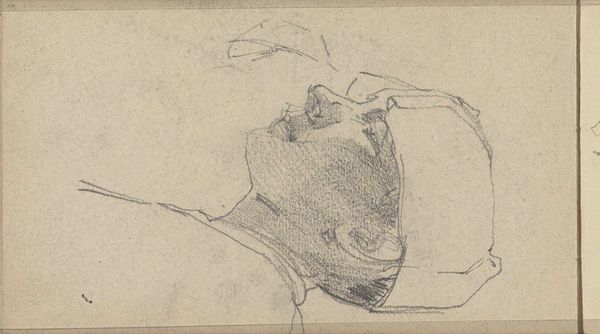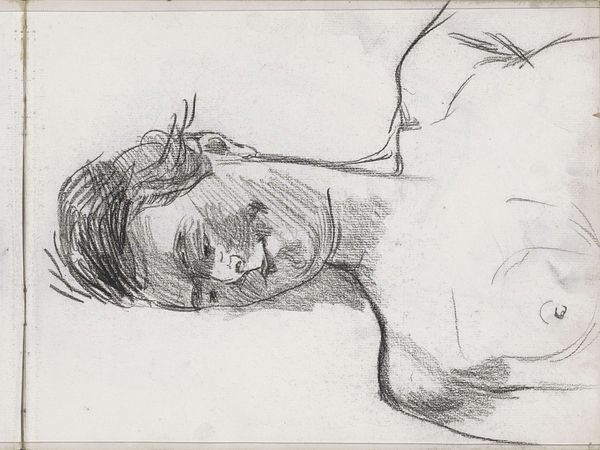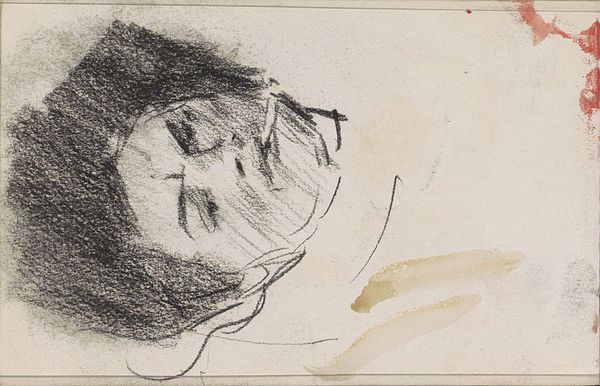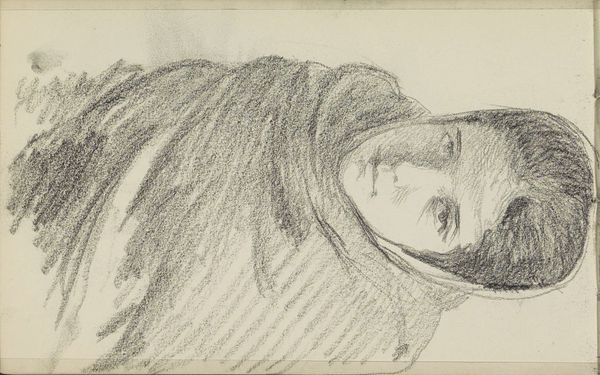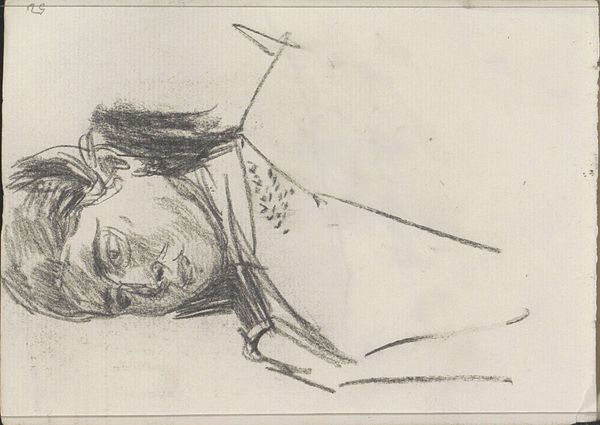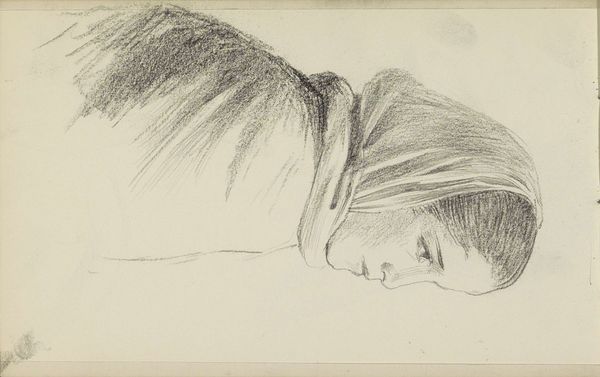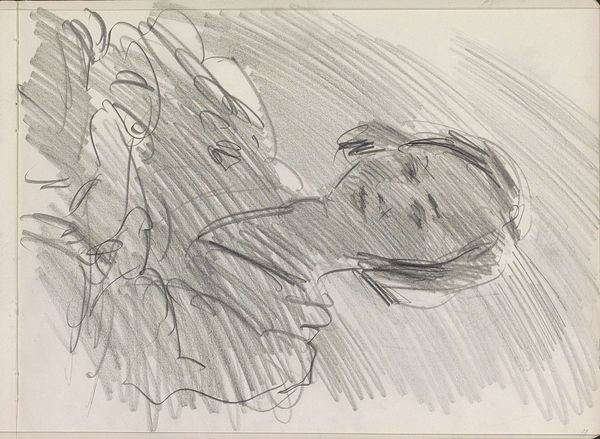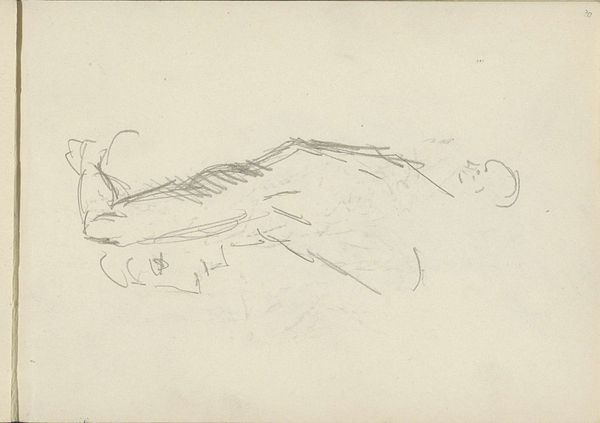
Copyright: Rijks Museum: Open Domain
Curator: This is Isaac Israels’s "Portrait of an Unknown Woman with Hat," circa 1919. It’s a pencil drawing, currently residing here at the Rijksmuseum. What strikes you when you first see it? Editor: Hmm, initially? A kind of melancholic elegance. It feels like a fleeting glimpse, like catching her in a moment of private contemplation. The tilted angle and the loose lines give it a sense of movement. I almost feel like I'm intruding on her thoughts. Curator: Absolutely. Israels was masterful at capturing that feeling of immediacy. Considering the time period, the end of the First World War, and the social shifts that were occurring, do you think that informs how we view this woman and her potential story? Editor: Oh, certainly. There’s a subtle ambiguity to her expression. It’s not just sadness; it could also be resilience, defiance even. Like she's seen a lot, perhaps lost a lot, but she's still holding her head high. The hat adds a layer of sophistication, maybe even a hint of performativity, given hats had deep cultural associations in those days. Curator: The hat does frame her face in a way that suggests a constructed identity, something that could also tie into broader ideas about the performance of femininity in that era. We might ask, for instance, what did it mean to be a woman navigating a rapidly changing world? What expectations were placed upon her? Editor: Right, what’s she hiding under that hat, metaphorically speaking? The loose strokes of the pencil almost make it seem like Israels wasn’t interested in rigid representation but more in conveying an essence, an emotional landscape. I can practically hear the faint music and hushed conversations from the salon. I wonder, who was she, and what were her dreams? Curator: It's interesting to consider that it remains unknown to us who this woman was. It prompts us to think about the stories of so many women from that era, whose experiences often go unrecorded or overlooked. The incomplete nature of the drawing can also be a metaphor for the gaps in our historical narratives. Editor: Yes! It is a powerful testament to both her known and unknowable self. Ultimately it serves as a moving example of both memory and historical narrative. Curator: Beautifully put. It truly invites a deeper pondering of these elusive glimpses into the past.
Comments
No comments
Be the first to comment and join the conversation on the ultimate creative platform.
